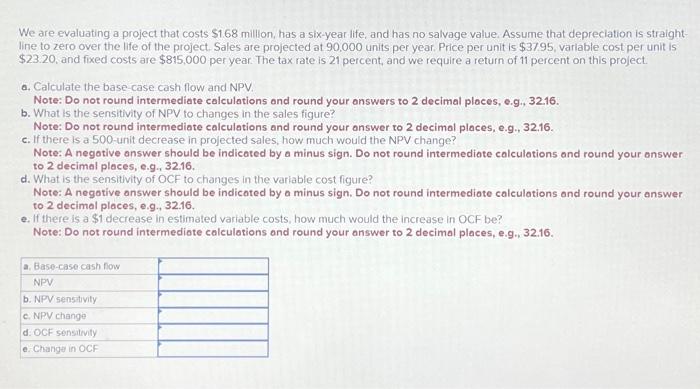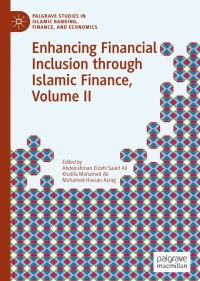Answered step by step
Verified Expert Solution
Question
1 Approved Answer
We are evaluating a project that costs $1.68 million, has a six-year life, and has no salvage value. Assume that depreciation is straight- line to
We are evaluating a project that costs $1.68 million, has a six-year life, and has no salvage value. Assume that depreciation is straight- line to zero over the life of the project. Sales are projected at 90,000 units per year. Price per unit is $37.95, variable cost per unit is $23.20, and fixed costs are $815,000 per year. The tax rate is 21 percent, and we require a return of 11 percent on this project. a. Calculate the base-case cash flow and NPV. Note: Do not round intermediate calculations and round your answers to 2 decimal places, e.g., 32.16. b. What is the sensitivity of NPV to changes in the sales figure? Note: Do not round intermediate calculations and round your answer to 2 decimal places, e.g., 32.16. c. If there is a 500-unit decrease in projected sales, how much would the NPV change? Note: A negative answer should be indicated by a minus sign. Do not round intermediate calculations and round your answer to 2 decimal places, e.g., 32.16. d. What is the sensitivity of OCF to changes in the variable cost figure? Note: A negative answer should be indicated by a minus sign. Do not round intermediate calculations and round your answer to 2 decimal places, e.g., 32.16. e. If there is a $1 decrease in estimated variable costs, how much would the increase in OCF be? Note: Do not round intermediate calculations and round your answer to 2 decimal places, e.g., 32.16. a. Base-case cash flow NPV b. NPV sensitivity c. NPV change d. OCF sensitivity e. Change in OCF

Step by Step Solution
There are 3 Steps involved in it
Step: 1

Get Instant Access to Expert-Tailored Solutions
See step-by-step solutions with expert insights and AI powered tools for academic success
Step: 2

Step: 3

Ace Your Homework with AI
Get the answers you need in no time with our AI-driven, step-by-step assistance
Get Started


